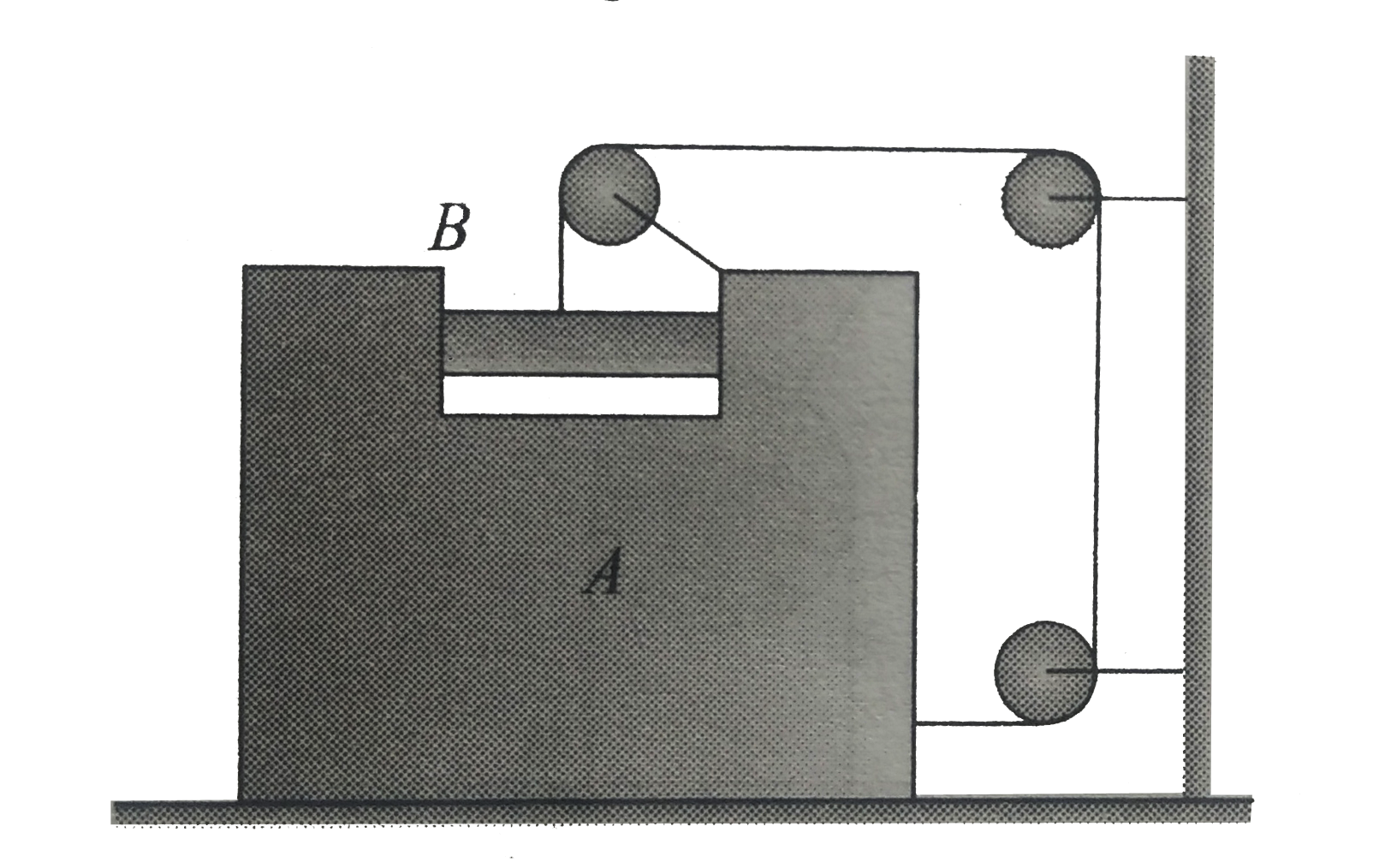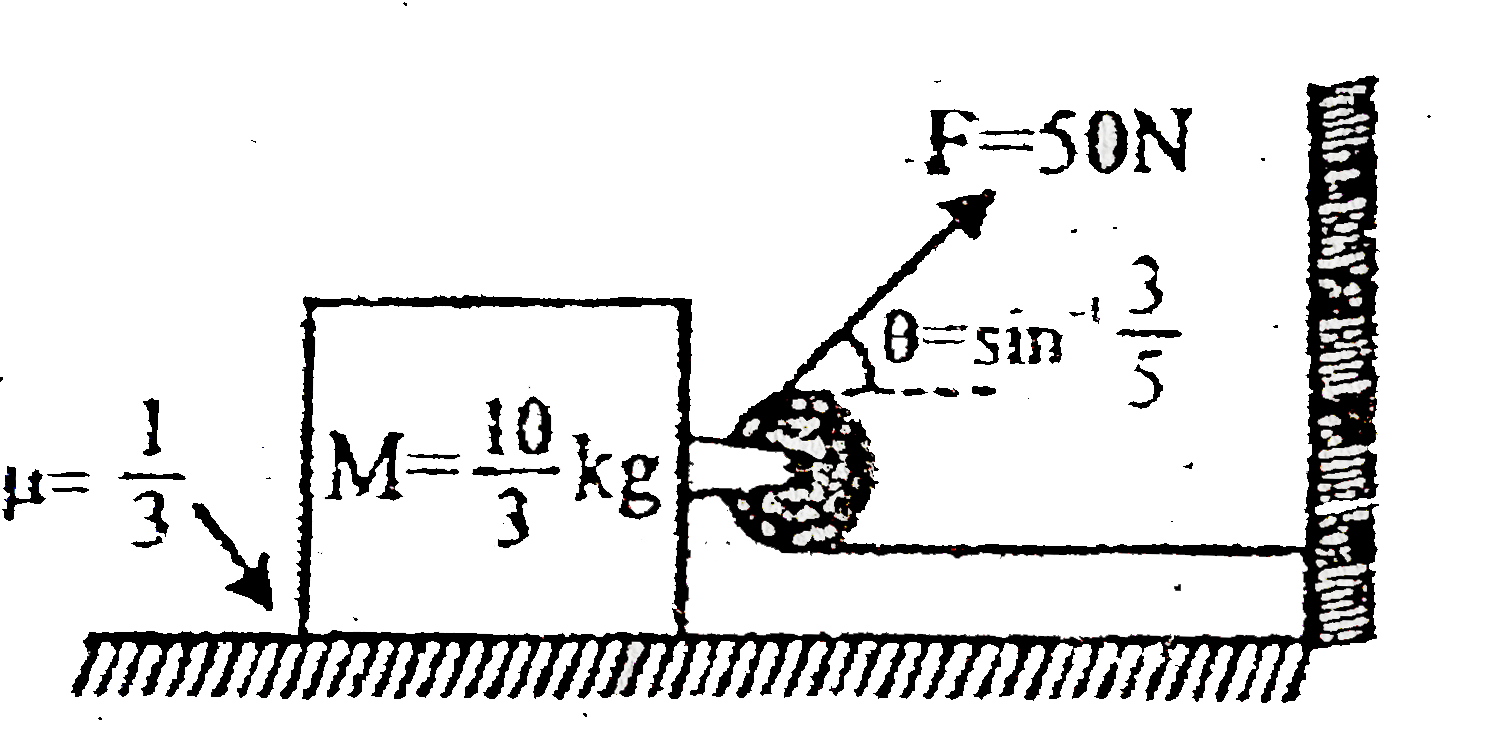A balloon with its contents weighing 160 N is moving down with an acceleration of g/2 ms−2 . The mass to be removed from it so that the balloon moves up with an acceleration of-g/3 ms−2 is
5 kg
10 kg
6 kg
3 kg
The correct Answer is:B
To solve the problem step by step, we will analyze the forces acting on the balloon and apply Newton's second law of motion.
Step 1: Determine the mass of the balloon
The weight of the balloon and its contents is given as W=160N.
Using the formula for weight:
W=mg
where g is the acceleration due to gravity. Assuming g=10m/s2:
160=m⋅10
m=16010=16kg
Step 2: Analyze the downward motion
The balloon is moving down with an acceleration of g2=102=5m/s2.
Applying Newton's second law:
Fnet=mg−Fair=ma
where Fair is the air resistance acting upward.
Substituting the known values:
160−Fair=16⋅5
160−Fair=80
Solving for Fair:
Fair=160−80=80N
Step 3: Analyze the upward motion
Now, we want the balloon to move upward with an acceleration of −g3=−103m/s2.
Let m′ be the new mass of the balloon after removing some contents. The weight of the balloon after removing mass is m′g.
Using Newton's second law again:
Fair−m′g=m′(−g3)
Substituting Fair=80N:
80−m′g=−m′g3
Step 4: Rearranging the equation
Rearranging gives:
80=m′g−m′g3
Factoring out m′g:
80=m′g(1−13)
80=m′g(23)
Solving for m′:
m′=80⋅32g=24020=12kg
Step 5: Calculate the mass to be removed
The initial mass of the balloon was 16kg, and after removing some mass, it is now 12kg.
The mass to be removed Δm is:
Δm=16−12=4kg
Final Answer
The mass to be removed from the balloon to achieve the desired upward acceleration is 4kg.
---
The weight of the balloon and its contents is given as W=160N.
W=mg
where g is the acceleration due to gravity. Assuming g=10m/s2:
160=m⋅10
m=16010=16kg
The balloon is moving down with an acceleration of g2=102=5m/s2.
Fnet=mg−Fair=ma
where Fair is the air resistance acting upward.
160−Fair=16⋅5
160−Fair=80
Solving for Fair:
Fair=160−80=80N
Now, we want the balloon to move upward with an acceleration of −g3=−103m/s2.
Fair−m′g=m′(−g3)
Substituting Fair=80N:
80−m′g=−m′g3
Rearranging gives:
80=m′g−m′g3
Factoring out m′g:
80=m′g(1−13)
80=m′g(23)
Solving for m′:
m′=80⋅32g=24020=12kg
The initial mass of the balloon was 16kg, and after removing some mass, it is now 12kg.
Δm=16−12=4kg
The mass to be removed from the balloon to achieve the desired upward acceleration is 4kg.
Similar Questions
A balloon of mass m is descending down with an acceleration How much mass should be g2 removed from it so that it starts moving up with same acceleration?
View SolutionA balloon with mass m is descending down with an acceleration a (wherea<g) . How much mass should be removed from it so that it starts moving up with an acceleration a?
View SolutionA man weighing 60 kg is in a lift moving down with an acceleration of 1.8 ms−2. The force exerted by the floor on him is
View SolutionA balloon of mass 10 kg is raising up with an acceleration of 20ms−2. If a mass of 4 kg is removed from the balloon its acceleration becomes ( take, g=10ms−2)
View SolutionWhen an empty lift is moving down with an acceleration of g4ms−2 the tension in the cable is 9000N. When the lift is moving up with an acceleration of g3ms−2 the tension in the cable is
View SolutionIf block A is moving with an acceleration of 5ms−2, the acceleration of B w.r.t. ground is

View SolutionIn a given figure the acceleration of M is (g=10ms−2)

View SolutionA 60kg man is inside a lift which is moving up with an acceleration of 2.45ms−2. The apparent percentage change in his weight is,
View SolutionA balloon os mass 2 KG is rising up with an acceleration of 4ms2 . The upward force acting on the balloon is (g = 10 ms^-2)
View SolutionA boy of mass 40 kg climbs up a rope with an acceleration of 2ms−2 . What is the tension in the rope ?
View Solution
